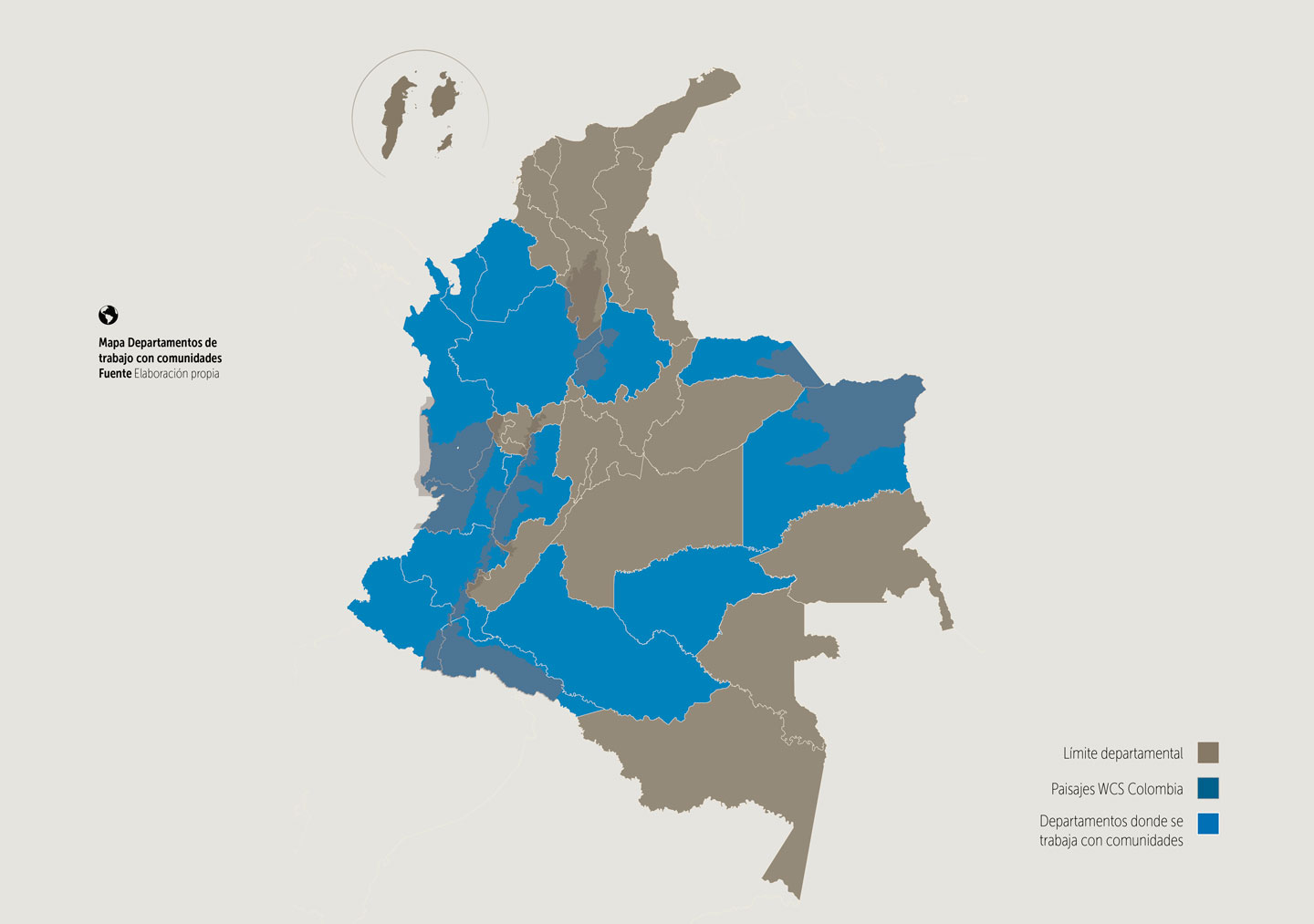Conservation in partnership with people
Every time WCS Colombia professionals arrive in any of the 32 departments of the country with the aim of significantly contributing to the conservation of wildlife and the landscapes that protect it —as part of their institutional mission— the work is always done hand in hand with the communities living in those territories.
The alliance that results from this partnership is essential because, at WCS, we understand that the conservation of flora and fauna is directly linked to the relationship that Indigenous peoples, campesino, Afro-Colombian, raizal, and palenquero communities have with nature and the biological resources to which they have access.
This means that the well-being, knowledge, and empowerment of people in these territories regarding their resources is also the protection of biodiversity and the sustainability of our actions. Without people, there is no territory; without territory, there is no biodiversity.
This summarizes the essence of this line of action—defined as Rights and Communities—which is crucial for WCS in achieving its goals.
It is based on four approaches that are complementary and interdependent: the socio-ecological approach, do-no-harm action, participatory research-action, and human rights. All advocate for equity, justice, and the inclusive participation of communities in decision-making on environmental issues, recognizing that respect and protection of human rights are intrinsically linked to environmental preservation and conservation.
For this reason, year after year, when areas needing care have been delimited, hundreds of rural inhabitants have participated in decision-making to implement processes of planning and sustainable use of biodiversity.

Main Areas of Community Engagement
At WCS, we have also identified four key areas of work where our engagement with the community is indispensable and enriching —among other activities—: conservation agreements, strengthening governance structures, participatory or community monitoring, and dialogue spaces regarding species and biodiversity knowledge.
These areas are addressed in an interdisciplinary manner and are carried out by teams from different fields, but they share a common focus on respecting and ensuring the rights of communities.
Conservation agreements are a pact made voluntarily and jointly. Through them, both parties contribute and benefit, generating positive impacts on biodiversity conservation and the improvement and maintenance of ecosystem services (PVS, WCS). In this process, a respectful and participatory approach—whether individual, family, or collective—is the fundamental basis for engagement and the sustainability of the process.
Additionally, WCS has had the wonderful opportunity to support organizations, community action boards, reserves, community councils, indigenous councils, or groups in strengthening their governance structures through various initiatives and activities that aim to promote sovereignty, autonomy, and empowerment over natural resources, coordination with government entities, land tenure, and environmental territorial planning.
Community monitoring is also common, where groups of local residents assist in data collection and monitoring of vertebrate species such as manatees, primates, birds, or fish like catfish, with the aim of conducting population analyses and defining actions to prevent their extinction.

We also have initiatives where the communities themselves are responsible for collecting this information, which is essential for decision-making regarding food sovereignty, the sustainability of their resources, and biodiversity conservation.
Additionally, at WCS, we have different strategies to foster community dialogues where local residents have the opportunity to interact with others from their community and from the scientific community about their knowledge of a particular species or ecosystem. This facilitates an exchange of knowledge, leading to the joint development of new, more sustainable interactions with the natural resources around them.
Amidst all of this, and with an understanding of the importance of involving women and youth, we actively promote their participation in activities where processes of consensus-building, dialogue, and sustainable livelihoods are necessary, among others.
In general, the rights and communities approach helps us understand how human actions affect the environment and vice versa, while also explaining the importance of considering the needs and knowledge of local communities in the sustainable management of resources.
By integrating social, cultural, and economic aspects into any strategy, more effective and contextually appropriate solutions can be developed to address conservation challenges.
Traslated with AI support